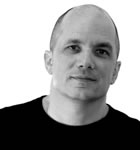Recently the 405 freeway was closed because of repairs, and it was touted as Carmageddon. What’s the significance of Los Angeles’s iconic car-and-freeway culture for its future?
MM: The big part of transportation is infrastructure, and for too long the infrastructures in this city have been thought of as monocultures. They only do one thing. The highway only does one thing. The power lines that run through the city only do one thing. We need to think about the way you can combine mobility and transportation with housing, businesses, parks, and education so we get greater intertwining between all of these different necessities and gain greater efficiencies and economies.
What do you do to create those connections between infrastructures and communities?
There is a long-term challenge in taking on the dividing lines between infrastructures and communities and finding opportunities to blur them. For instance, there was a huge need to modernize, build, and expand the school districts. There was the idea that a school in the middle of a neighborhood was a problem where gangs would hang out, bringing down the property values—which is ironic because schools used to be the center of communities. There was a real possibility in this situation. You could imagine schools being combined, sharing facilities, and acting as a kind of social and cultural bridge between these communities. [Instead] communities were trying to push the schools outside of their neighborhoods.
Los Angeles is often criticized as a backyard city with its citizens not taking advantage of public space. What ways do you get people out of their backyards using public space?
There are many cultures like the Latino community in LA that use the open space and the parks. Increasingly we need to find ways of creating public space as open space. Building those spaces in natural, real, and authentic ways … is critical. It is also important to provide easy access to these types of spaces. If you are forced to get in your car and drive a long way through traffic … very few people are going to do that. They are going to stay in their backyards.
How do you create connections with these bridges of architecture between communities?
Architecture has the opportunity to show how you can create connections in a more inventive, creative way. For instance, you can organize a school so the gymnasium can also serve as a space with enormous roll-up doors all around its perimeter, and [it] can serve as a community piazza or gathering space. I believe that the architect has to be an advocate for that possibility with their client, and that client has to be a person in the community willing and able to propose alternatives—at times radical alternatives—to community constituents.
How do you see all of these things adding up to change the Los Angeles?
Hopefully it will happen in ways that will startle us. Underneath it all is a question of trying to find ways to create space and possibilities for us to see each other. That sounds like a very simple thing, but for the longest time I have criticized Los Angeles as a city in which we have no common social experience. We have a lot of parallel social experiences, but they are not the same. At the core of what is necessary for a city like Los Angeles to flourish is the need for a physical city to create more connected human relationships.

